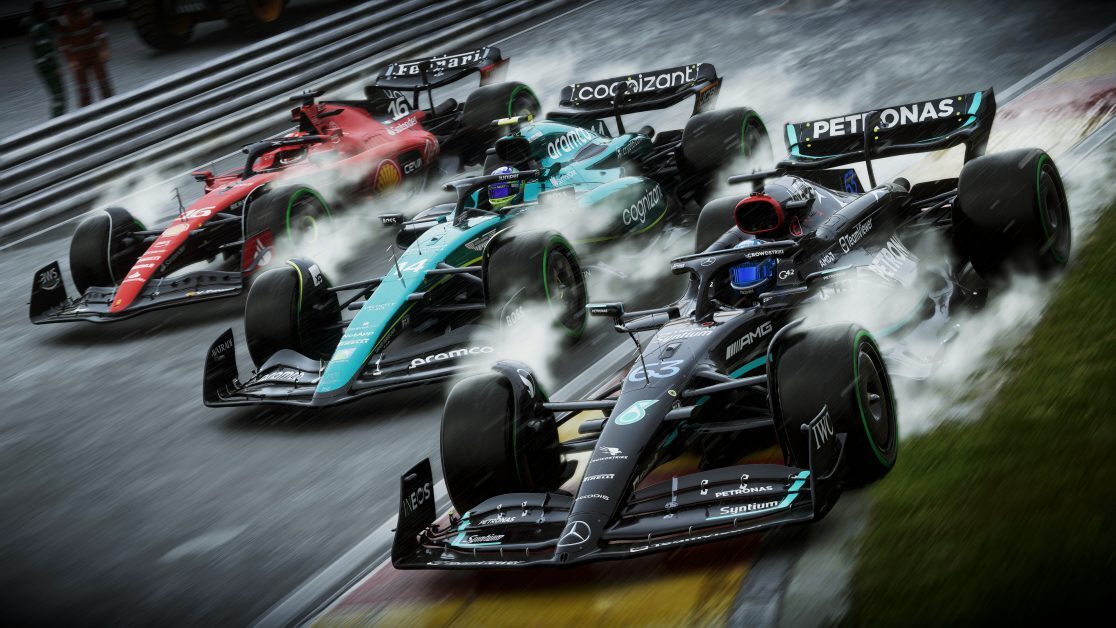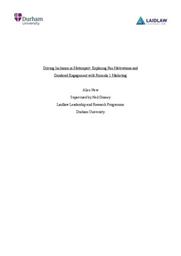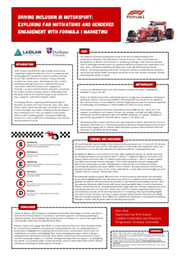Initial Research Proposal: Female Engagement with Formula One Marketing

Driving Inclusion in Motorsport: Exploring Female Engagement with Formula One Marketing
Since its inception, the fanbase of Formula One has been dominated by men. This has been reflected in its archaic marketing strategies. For example, the wildly controversial, provocatively dressed ‘grid girls’ who were employed until 2018, being used as sexually objectified “decorative figures” at races, preserving the notion of women having a passive relationship with the sport (Tippett, 2020). However, in recent years, the tide is turning. Upon Liberty Media’s acquisition of F1 in 2017, a fresh, exciting rebrand was initiated, attempting to steer away from its “pale, stale, male” (Joel Mackenzie, 2024) ancestry that deterred female engagement (Motorsport Network et al., Youssef, 2023). F1’s collaboration with Netflix to produce the docuseries ‘Drive to Survive’ (DTS) allowed behind-the-scenes access into the strategy of Grands Prix, and the lives of drivers, which proved extremely popular (Motorsport Network et al., Youssef, 2023). However, the show has been severely criticised for featuring women speaking for a pitiful 1.54% of season five’s running time, thus continuing to alienate female viewers (Roper, 2023). So, despite the foundational success of F1 in encouraging a more gender-diverse fanbase in F1 using DTS, there are astute limitations of the current marketing strategies employed which I aim to help them overcome with my research.
Research questions:
- What are the psychological reasonings behind motivations of female F1 fans?
- How do these differ from male fans?
- Which sport marketing strategies successfully attract women?
- Which strategies can be implemented in F1 to balance gender distribution amongst fans, whilst being cohesive with new aims to rebrand the sport?
These strategies aim to resonate with women, making them feel valued and accepted within the sport, which DTS lacks, and may be restricting the further gender-diversification of the sport. I will share my findings with F1, meaning my research could have positive societal impacts if the strategies are implemented as not only will women be able to find belonging in a community that they may have previously felt shut out from, but an increase in female fans would increase the number of women pursuing careers in the sport. Long-term this could lead to a higher likelihood of seeing female drivers in F1, a notable milestone for equality, as female fans may encourage their daughters into karting, developing a more diverse next generation of racers.
Research objectives:
- Survey F1 fans of university age to explore what draws them to be fans using qualitative techniques like open-ended questions to allow for meaningful, subjective data
- Collate a range of sport marketing examples and explore responses to them through surveys and interviews.
- Analyse data of answers and differences in effectiveness of engaging men and women
- Apply psychological theory to discuss explanations between differences
- Develop marketing strategy recommendations for F1 to attract female fans using evidence from research data and psychological theory
I will use a qualitative approach, using surveys and interviews to understand subjective motivations of being a fan that a quantitative approach may restrict. However, this may limit generalisability of results, so, I will use triangulation, collecting data from both interviews and surveys to strengthen the validity of my conclusions. I will report to Professor Neil Graney, who has valuable expertise in sports marketing and a background teaching equality issues as part of Global Sport Business modules. Weekly meetings will be held to touch base on my milestones of creating a literature review and preparing survey and interview questions in the first two weeks before moving on to outlining the method and collecting data in the subsequent two weeks. In the final two weeks I will analyse the data and write it up into an informative report and academic poster.
I will use Connell’s (2009) approach to gender, outlining that it is created and understood through social interactions in society (Connell 2009, McDonald 2017). This gives a more nuanced understanding than a fixed, biological approach to gender explained simply by sex differences. However, this may downplay individual differences and overgeneralise how women behave, therefore, in my report I will acknowledge the diverse personal experiences of women, highlighting that one single marketing strategy will not resonate with all women, whilst providing rational evidence of why it is still a reasonable method of targeting that demographic. There is evidence to suggest that men’s and women’s behaviours in consuming sports are not identical, with women having more social motivations to attend sport than men (Heath 2009, McDonald 2017). Therefore, I seek to gain an understanding of these psychological differences that can allow insight into why effectiveness of marketing strategies differs based on gender. Marketing and psychology are deeply intertwined disciplines, with an understanding of the psychology behind women being F1 fans necessary for me to create effective, specific marketing strategies that adhere to the psychological principles outlined as motivational factors.


Please sign in
If you are a registered user on Laidlaw Scholars Network, please sign in